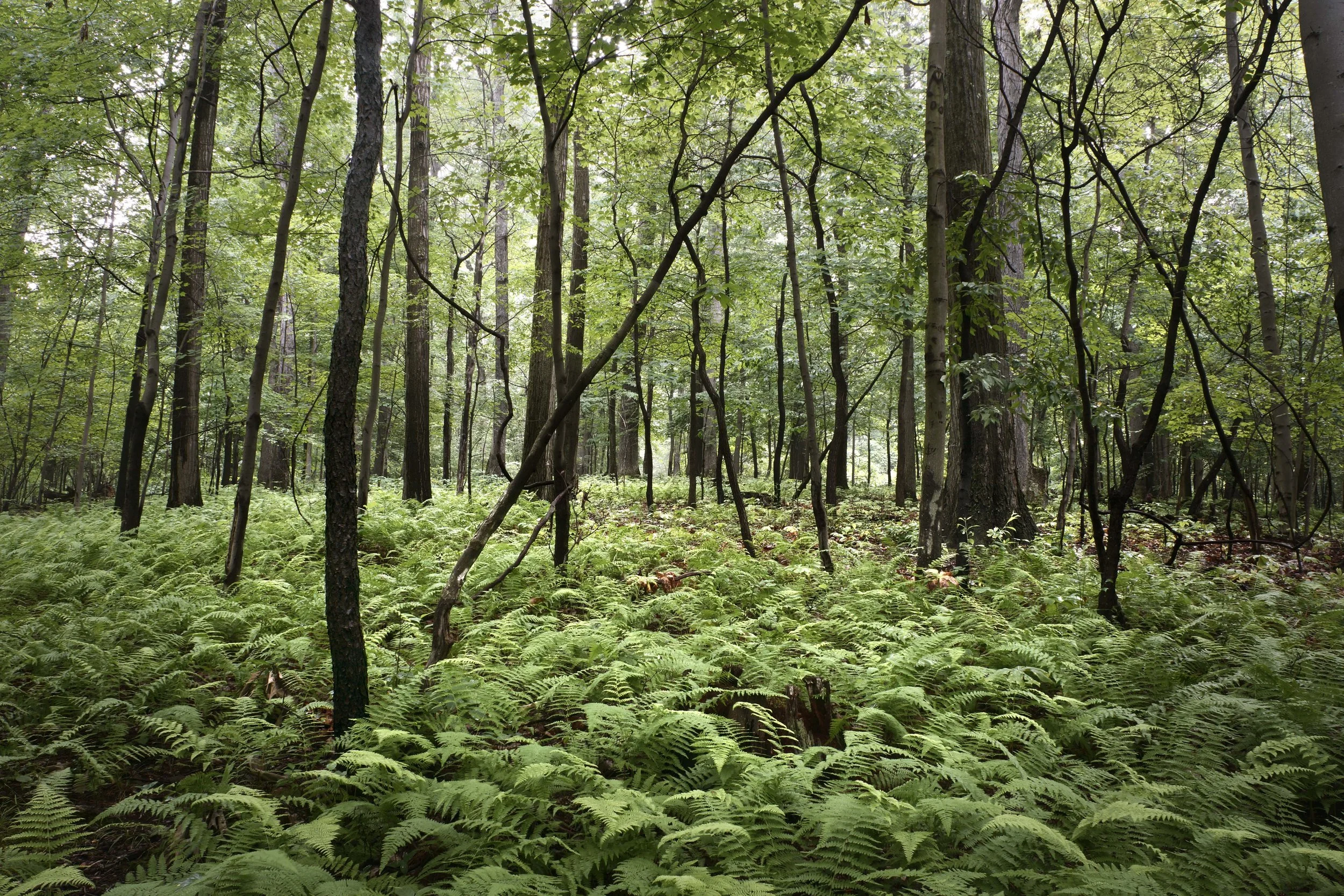Hydrologic impact of invasive plants
To most visitors the scene in this image from the Eden Hall Campus reflects an ideal forested setting in western Pennsylvania. But an environmental crisis is evident to the botanically trained eye. Now that their predators have vanished from the forest, white-tailed deer throughout the eastern United States exist at population densities far higher than they ever have been. The consequence: a landscape-scale feeding frenzy with major ecological implications. Overabundant deer are ravaging our forests by browsing all plants that are even somewhat palatable. The carpet of ferns shown here is thriving because deer cannot consume them. However, this scene is much more pleasant than another outcome of overabundant deer. Invasive plants, especially woody shrubs, thrive in forests with too many deer precisely because they are unpalatable.
Hydrologic ecosystem services provided by forests are strongly impacted by widespread plant invasions. Invasive plant species spread by creating impenetrable thickets that grow to dominance in forest understories. Many invasive plants possess high evapotranspiration rates or retain leaves for longer periods relative to native species. Consequently, the fraction of water lost to evapotranspiration can increase following understory plant invasions. Given the extent of plant invasions in contemporary forests, invasive species are likely capable of significantly reducing water export to soils, groundwater, and surface water. Understory restoration projects that eradicate invasive plants and replant native species may restore desired hydrologic functions. Yet the effect of invasive plants on water budgets and how hydrologic cycling responds to remediation remains poorly studied in the eastern United States, despite the ubiquity of severe plant invasions throughout North American forests. Thanks to a National Science Foundation EMpowering BRoader Academic Capacity and Education (EMBRACE) grant, Dr. Jill Riddell and I will work alongside students to rehabilitate a 0.5 ha patch of Eden Hall forest through invasive species removal, excluding deer from extensive areas to ensure native plant recovery, and planting extirpated native flora to enhance biodiversity. High-frequency soil moisture sensors will track soil moisture changes during the proposed activities. Such activities offer an ideal platform to empirically understand how invasive plants impact water budgets. The Eden Hall Campus offers an unprecedented platform for investigating how plant invasions interact with hydrologic cycles. Most of the ~400-acre campus is comprised of secondary-growth forest with understories dominated by invasive species now common throughout the northeastern United States. The project will elucidate how invasive plants and restoration activities influence hydrologic cycles by coupling forest understory restoration with long-term water budget monitoring using soil moisture sensors. Ultimately, this work is the first stage in establishing a long-term ecohydrology observatory on the Eden Hall Campus of Chatham University.
